 Kalliope’s
Comments
(group member since Aug 28, 2018)
Kalliope’s
Comments
(group member since Aug 28, 2018)
Kalliope’s
comments
from the Ovid's Metamorphoses and Further Metamorphoses group.
Showing 201-220 of 610
 Found a paper on Picturing Rape in Ovid. Those who have access to Institutions in Education may be able to get it for free.
Found a paper on Picturing Rape in Ovid. Those who have access to Institutions in Education may be able to get it for free.https://brill.com/view/book/edcoll/97...
 In my reread I now have paid more attention to the paragraph devoted to Pelops, Niobe's brother, and his ivory shoulder.
In my reread I now have paid more attention to the paragraph devoted to Pelops, Niobe's brother, and his ivory shoulder.This again is a story not fully developed in the Met and I had to go and look it up.
We had met Tantalus in Hades in Book 4, when he was already punished by his dreadful deed in his banquet in which he served Pelops cooked up - hence his loss of the left shoulder since someone ate it up.
Jean-Hugues Taraval. The Feast of Tantalus. 1766. Versailles.
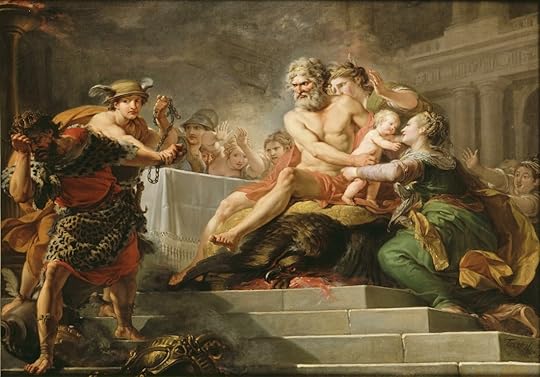
I can't make sense of the painting, though.
 The second episode of Latona, with the farmers, serves to whitewash her somewhat, after the Niobe episode.
The second episode of Latona, with the farmers, serves to whitewash her somewhat, after the Niobe episode.This is another figure that assumes a fair amount of previous knowledge - another instance of how Ovid's contemporary readers would have been so very different from ours. A great deal of the confusion for us (at least for me) would not have been felt by them.
I looked up Latona / Leto in Wiki. The knowledge of her being the mother of both Apollo and Artemisia, twins, makes the transitions much smoother.
From wiki- I post an extract.
Leto is a daughter of the Titans Coeus and Phoebe, the sister of Asteria.
The island of Kos is claimed as her birthplace.In the Olympian scheme, Zeus is the father of her twins, Apollo and Artemis, which Leto conceived after her hidden beauty accidentally caught the eyes of Zeus. Classical Greek myths record little about Leto other than her pregnancy and her search for a place where she could give birth to Apollo and Artemis, since Hera in her jealousy caused all lands to shun her. Finally, she found an island that was not attached to the ocean floor so it was not considered land and she could give birth.This is her only active mythic role: once Apollo and Artemis are grown, Leto withdraws, to remain a dim matronly figure.
 Historygirl wrote: "Niobe and her children. My favorite of the paintings is the Bloemaert with its harsh colors and writhing forms. My modernist bias, most likely. The others are beautiful, but not as emotive.
Historygirl wrote: "Niobe and her children. My favorite of the paintings is the Bloemaert with its harsh colors and writhing forms. My modernist bias, most likely. The others are beautiful, but not as emotive. There..."
I have reread this post, HG. Very enlightening - I particularly welcomed the update on Julia and the possible
I wish I knew the history of this particular period a bit better. Ovid has certainly awoken in me the interest in Roman times.
 Roman Clodia wrote: "The description, too, of her technique is telling: '...a range of a thousand hues, but the eye cannot tell where one fades into another; adjacent tones are so much the same, though the difference is clear at the edges' (6. 65-7) - isn't this like Ovid's own weaving of stories so that it's not always easy to spot the transitions between them? .."
Roman Clodia wrote: "The description, too, of her technique is telling: '...a range of a thousand hues, but the eye cannot tell where one fades into another; adjacent tones are so much the same, though the difference is clear at the edges' (6. 65-7) - isn't this like Ovid's own weaving of stories so that it's not always easy to spot the transitions between them? .."I am rereading all the thread and this comment is very apt... Certainly all sense of chronology, that even if we know that we are dealing with divinities, we readers still want to impose it on the narrative, is disolved with the Niobe story when she reminds everyone that the House of Cadmus (for us already extinguished) IS under her power.
 Roman Clodia wrote: "Ah, sorry Kalli, I suddenly thought we hadn't mentioned Titus in the context of Ovid - and had forgotten that actually you had!
Roman Clodia wrote: "Ah, sorry Kalli, I suddenly thought we hadn't mentioned Titus in the context of Ovid - and had forgotten that actually you had! .."
RC, I am delighted you picked on it. I was hoping you would (my understanding is that your expertise is the take up of Ovidian themes and elements during the Renaissance).
Ah, and on Tale of Two Cities... I constructed my review with the knitting in mind... haha...
 Peter wrote: "The horrible moment when Tereus realizes the nature of his meal is lively depicted in this painting
Peter wrote: "The horrible moment when Tereus realizes the nature of his meal is lively depicted in this paintingPieter Paul Rubens. Tereus' Banquet. 1636-38. Museo Nacional del Prado.
"
Thank you for posting this Rubens, Peter. The Prado has expanded added rooms to its Flemish collection. I have to see if this one is on display now. In their website they describe it as the cruelest scene of the series for the La Parada hunting lodge.
 Roman Clodia wrote: "I'd never seen the Burne-Jones before - thank you!
Roman Clodia wrote: "I'd never seen the Burne-Jones before - thank you! Yes, there's a long tradition equating weaving with story-telling: Penelope in the Odyssey, Helen weaving the siege of Troy in the Iliad... espe..."
Yes, I know we have spoken about this before, but I was just struck to see the theme come to the foreground again with the Russian female Modernists. A period in which there were several women active in the arts (and the textile theme mixed with painting explored by several - another one is Sonia Delaunay). Not until several decades later would women occupy such an important place in the avant-garde as they did in Russia in the early 20C.
 Historygirl wrote: "Opening March 18 at the Metropolitan Museum an exhibition that relates to our topic. I am eagerly awaiting it. If you are not inNYC the Met Museum usually posts an extensive selection of thumbnails..."
Historygirl wrote: "Opening March 18 at the Metropolitan Museum an exhibition that relates to our topic. I am eagerly awaiting it. If you are not inNYC the Met Museum usually posts an extensive selection of thumbnails..."Thank you, HG, an exhibition to keep in mind and track.
 Roman Clodia wrote: "An important reception/re-use of the Tereus/Procne/Philomela story is Titus Andronicus and Shakespeare delights in the grotesque nature of the tale.
Roman Clodia wrote: "An important reception/re-use of the Tereus/Procne/Philomela story is Titus Andronicus and Shakespeare delights in the grotesque nature of the tale. His rapists, despite being Goth..."
Yes, I mentioned the Titus Andronicus in my comment #60 above. It is used as an example by critics who want to put the violence of this chapter a bit into a wider context so that we modern readers don't become too judgmental with Ovid.
 Yesterday I went to the Balthus exhibition in the Thyssen museum, and in the shop section dedicated to the exhibition they had a couple of books by Balthus's bother, Pierre Klossovski, since they both exchanged many ideas and some notions from Pierre's novels would resurface in Balthus's work.
Yesterday I went to the Balthus exhibition in the Thyssen museum, and in the shop section dedicated to the exhibition they had a couple of books by Balthus's bother, Pierre Klossovski, since they both exchanged many ideas and some notions from Pierre's novels would resurface in Balthus's work.One was this one Le bain de Diane.
Inspired in Ovid, of course.
I may read it later on and will add it to the Library in the Group.
 Somewhat off-topic.
Somewhat off-topic.I was today at an exhibition on Russian modernist avantgarde, and there was a painting by Natalia Goncharova, in the Futurist manner, with a bicycle etc.. but what is interesting is that in the background we see window shops with words that have all to do with cloth, materials and textiles... It seems this artist was interested in linking painting and textiles. In her later career she devoted herself increasingly to the textile activities.
(view spoiler)
 Elena wrote: "Did we get Edward Burne-Jones' engraving, Philomene, ?? with a woman (Philomela) standing by her loom holding a shuttle in an interior, with a half-woven tapestry with the story of Philomene and Te..."
Elena wrote: "Did we get Edward Burne-Jones' engraving, Philomene, ?? with a woman (Philomela) standing by her loom holding a shuttle in an interior, with a half-woven tapestry with the story of Philomene and Te..."Here it is, Elena.
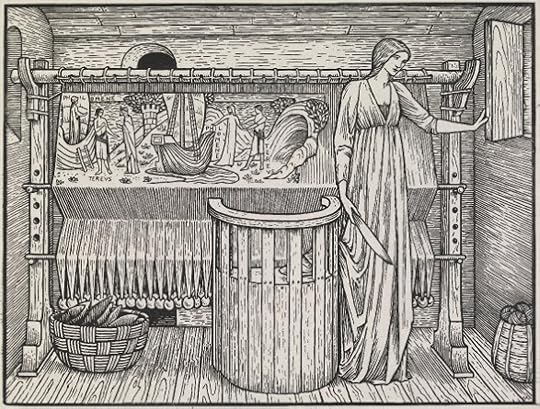
 Jim wrote: " This is Maman, a permanent resident of Canada'a National Gallery and she's quite popular...."
Jim wrote: " This is Maman, a permanent resident of Canada'a National Gallery and she's quite popular...."This is wonderful. It was not there when I visited.
 I have reread the section of Arachne and what strikes me in the second reading is the attention payed to the act of weaving, and not just the weaving, but the more menial preparation of the materials. In an earlier post I commented on the importance of the purple dye. This time I noticed the attention paid to the rainbow and its gradations.
I have reread the section of Arachne and what strikes me in the second reading is the attention payed to the act of weaving, and not just the weaving, but the more menial preparation of the materials. In an earlier post I commented on the importance of the purple dye. This time I noticed the attention paid to the rainbow and its gradations. Until modern times the iridescence of the colours of the peacock's tail and the rainbow were seen by painters as visual beauties unattainable by their art.
Another thing that struck me in the second reading is in Arachne's tapestry, is that in all the 'crimes' and deceptions perpetrated by the gods, several have appeared in the earlier books of the Met, while others have not been mentioned. I wonder how many of those may be treated later on in the book.
This time it also struck me how Arachne tries to kill herself with her own thread.. but Minerva prevents even this with a worse punishment.
 Elena wrote: "looks like the putti are having a snowball fight..."
Elena wrote: "looks like the putti are having a snowball fight..."Haha.. yes...
What I like about this painting is the contrast in colour and texture between the two bodies. That's why I took the detail of the arms and legs.
 The final theme in this book is that Boreas and Orithya. Although it is not given a long section in the text, it is also captivating.
The final theme in this book is that Boreas and Orithya. Although it is not given a long section in the text, it is also captivating. There are a few paintings on this subject also. Rubens, again, stands out.
I saw it not too long ago. I was in Vienna last October.
Rubens. The Rape of Orithyia by Boreas. 1620. Vienna Academy of Fine Arts.
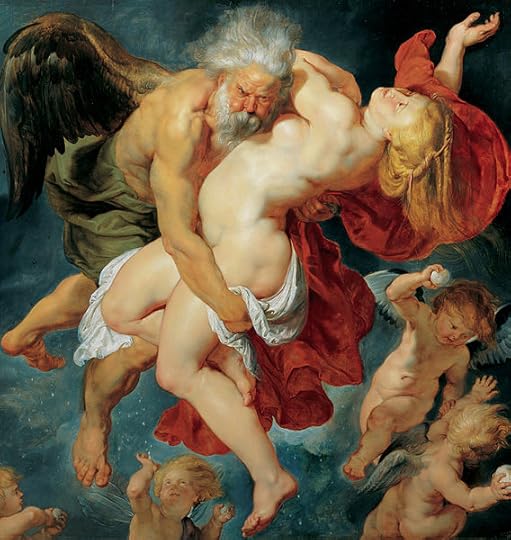
The above is from wiki, but below are my own photos.
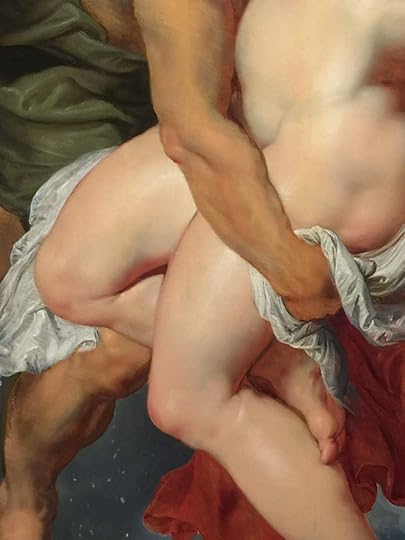


There are more paintings on this theme but I wanted the Rubens to stand on its own. As you can see, I was fascinated when I beheld it in its current place.
 Yesterday I went to watch 'The Russian Ark' which was filmed in the Hermitage. Some of the paintings are shown, and one that took pride of place was Rembrandt's Danäe.
Yesterday I went to watch 'The Russian Ark' which was filmed in the Hermitage. Some of the paintings are shown, and one that took pride of place was Rembrandt's Danäe.I was thrilled.
I am posting it again, it is such a beautiful painting.
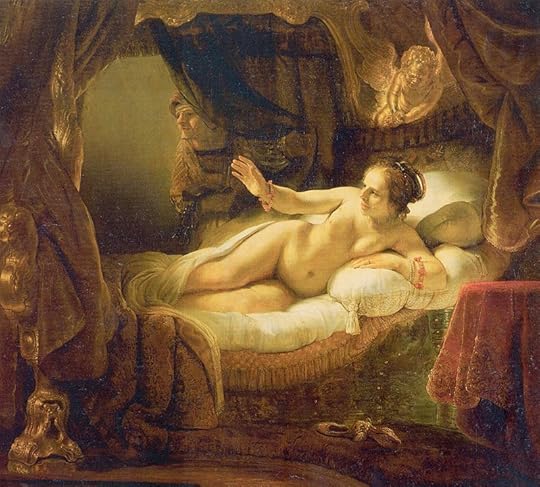
https://www.imdb.com/title/tt0318034/...
 Reading a book on Raphael, the frescoes painted by Baldassarre Peruzzi in the Villa Farnesina in Rome were mentioned.
Reading a book on Raphael, the frescoes painted by Baldassarre Peruzzi in the Villa Farnesina in Rome were mentioned.I was unaware of them. Everyone always talks only about Raphael's works there. But these look fabulous too.
http://www.villafarnesina.it/?page_id...#
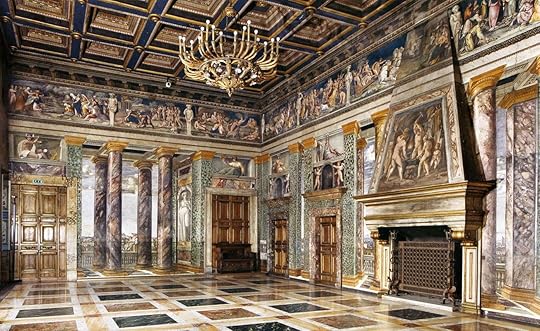
They are the frescoes on the higher part of the walls.
 Elena wrote: "The Berkeley Rep's production of Mary Zimmerman's Metamorphoses has been a great success, they have added more performances. I didn't get to see it but friends say it is magnificent, the myths take..."
Elena wrote: "The Berkeley Rep's production of Mary Zimmerman's Metamorphoses has been a great success, they have added more performances. I didn't get to see it but friends say it is magnificent, the myths take..."Thank you, Elena. I wish I could have gone back to watch this.


